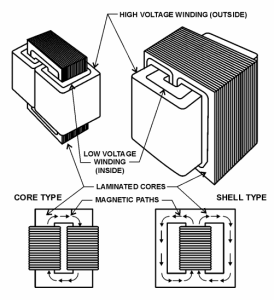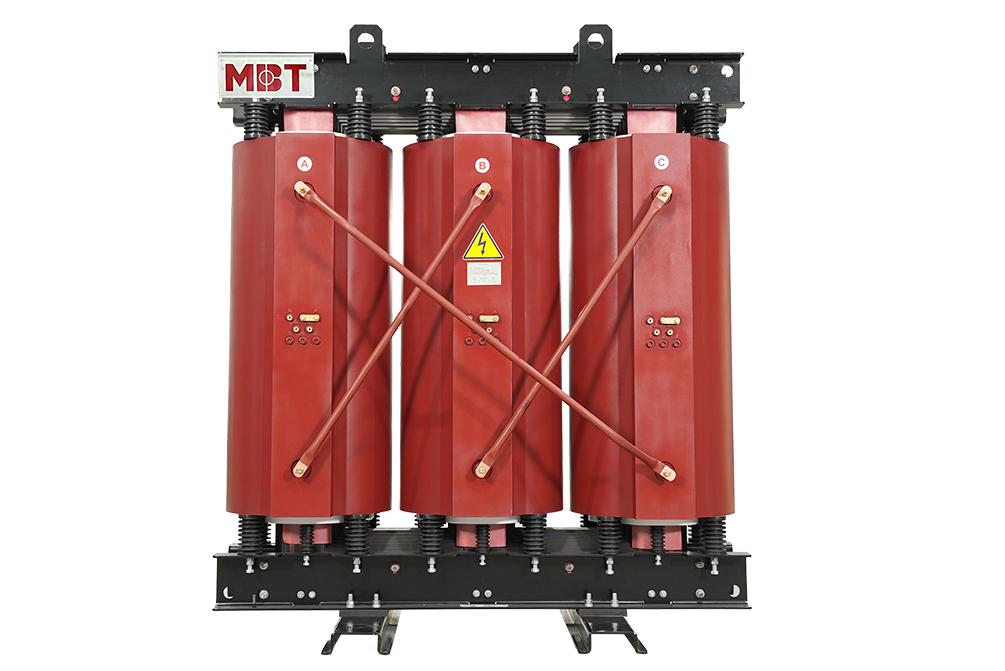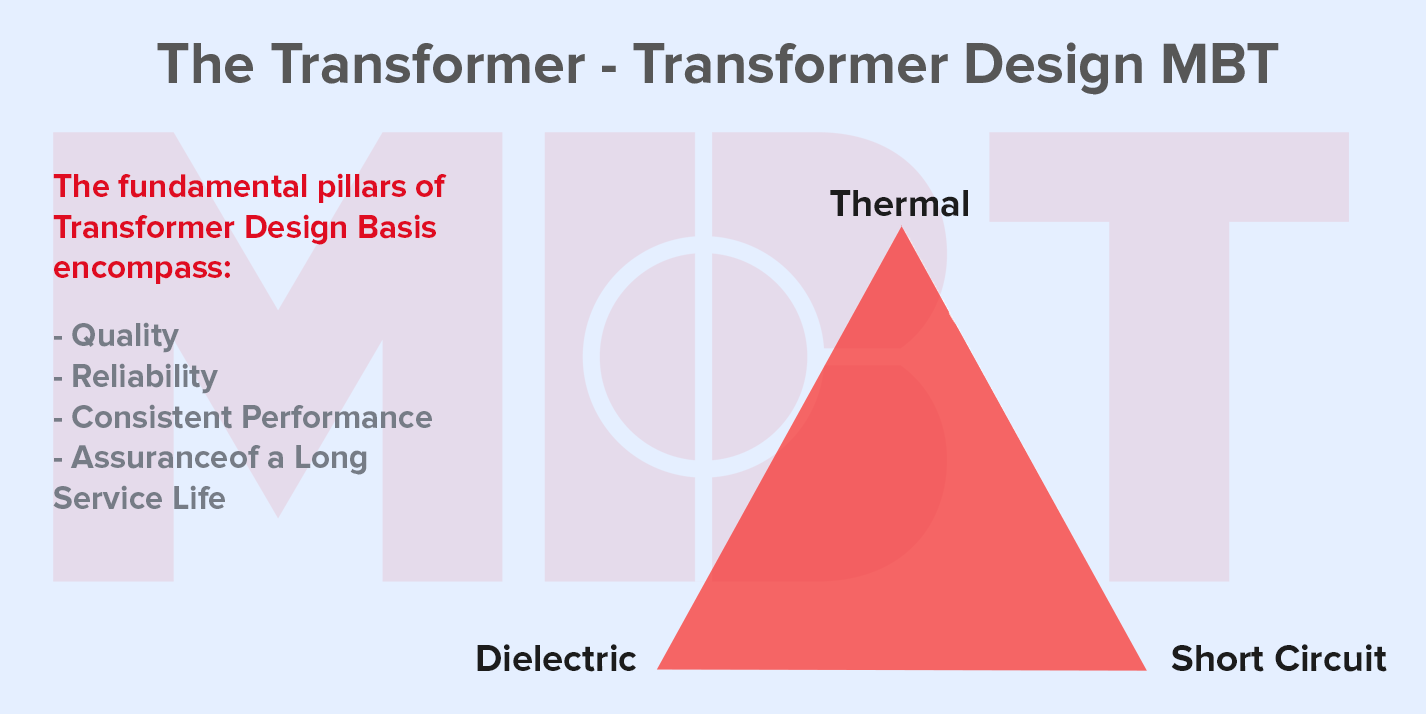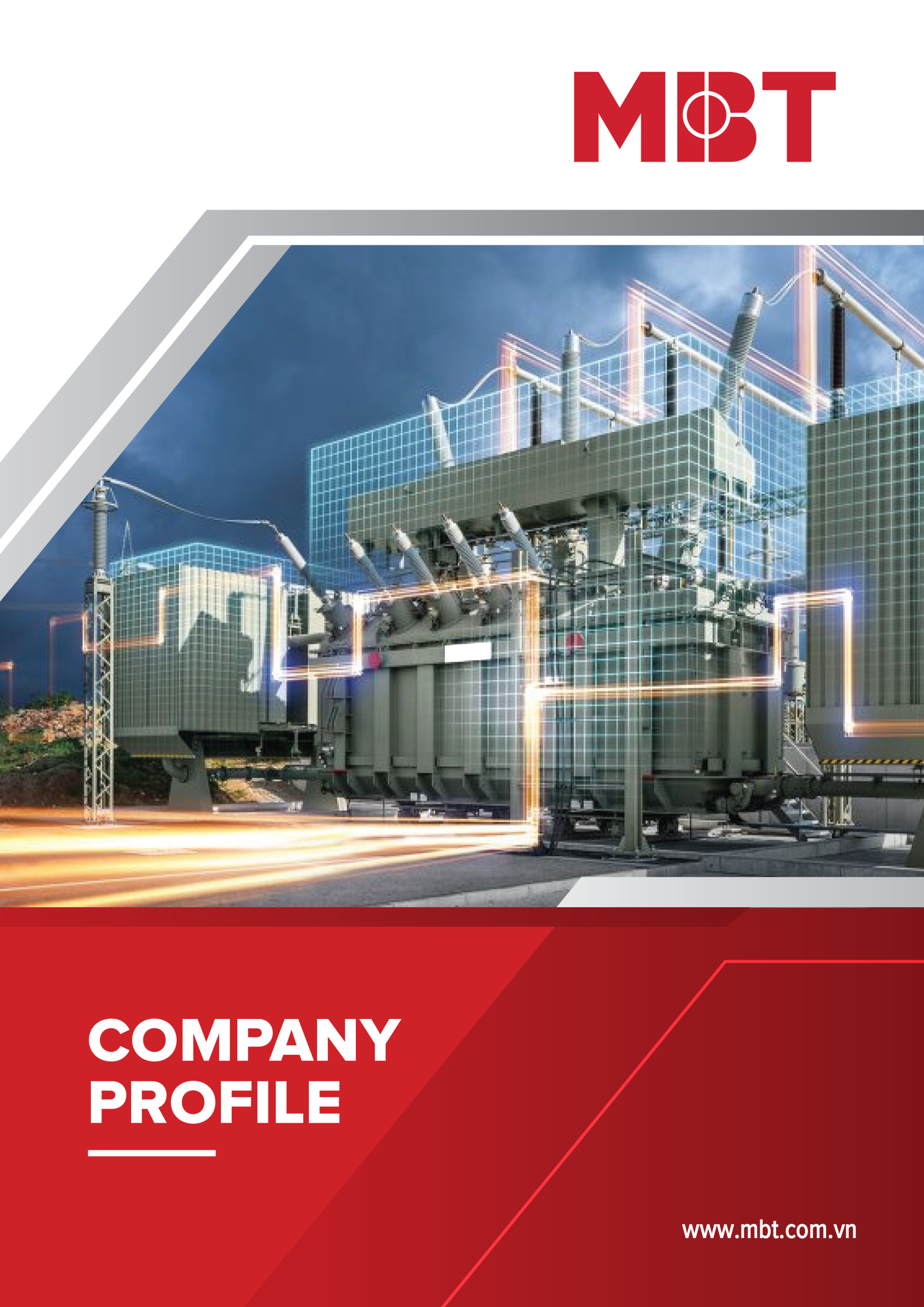
The Magnetic Circuit of Transformer
The Transformer Magnetic Circuit
A magnetic circuit, commonly called the core of a transformer is equipped to supply a path for the magnetic field, which is important for the induction of voltages between windings.
A path of low reluctance (i.e., resistance to magnetic lines of force), including thin silicon, sheet steel laminations, is used for this purpose. Besides providing a low reluctance path for the magnetic field, the core is to prevent circulating electric currents within the steel itself. Heating and energy loss are caused by circulating currents, called eddy currents. These losses are caused whenever the voltages are induced in the steel of the core, which is frequently subject to alternating magnetic fields.
Steel itself is a conductor so that the changing lines of magnetic flux also induce current and a voltage in this conductor. Eddy currents (losses) are greatly reduced by using very thin sheets of steel with insulating material between sheets. The two common arrangements of the windings and the magnetic path are shown in Picture 1 and Picture 2. The windings surround the core in the core-type (core form) transformer. A section of both secondary and primary windings is wound on each leg of the core, and the high voltage winding is wound over the low voltage, the low voltage winding is wound next to the core.
Picture 1: Magnetic Circuits
Picture 2: Three-Phase Core Form and Three-Phase Shell Form Transformer Units
In a shell-type (shell form) transformer, a shell is formed surrounding the windings by the steel magnetic circuit (core). In a shell form, the windings are on the inside, in a core form, the windings are on the outside. the electrical windings are arranged in power transformers so that practically all of the magnetic lines of force go through both the secondary and primary windings. Leakage flux is a small percentage of the magnetic lines of force that goes outside the core. For example, larger transformers, such as Reclamation GSU transformers, are almost always shell type.
Note that, in the shell form transformers, (see Picture 2) the magnetic flux, external to the coils on both right and left extremes, has complete magnetic paths for stray and zero sequences flux to return to the coils. In the core form, it can easily be seen from the figure that, there are no return paths on both right and left extremes.
Therefore, the flux must use the insulating medium and external tank walls for return paths. This decreases overall efficiency and increases core losses and shows why most large transformers are built as shell form units.
Related article: https://vietnamtransformer.com/our-news/losses-in-transformer
Copper Losses- Magnetic Circuit
Due to the resistance of the primary winding to the magnetizing current, there is some loss of energy in a transformer even when no load is connected to the transformer. The heat generated in the winding causes losses that must also be removed by the cooling system. When a load is connected to a transformer and electrical currents exist in both secondary and primary windings, further losses of electrical energy occur. These losses are called copper losses (or the R*I^2 losses) due to the resistance of the windings.
Core Losses – Magnetic Circuit
Since the magnetic lines of force in a transformer are frequently adjusting in direction and value, heat is evolved because of the hysteresis of the magnetic material (friction of the molecules). This heat must be removed by the cooling system. Accordingly, it represents an energy loss of the transformer. High temperatures in a transformer will drastically reduce the life of insulating materials used in the structures and windings. The life of the transformer is cut by one-half for every 8 degrees Celsius (°C) temperature rise. Therefore, the maintenance of cooling systems is important. Losses of energy are known as core losses, which appear as heat due both to hysteresis and to eddy currents in the magnetic path. Since these losses are caused by the alternating magnetic fields, they occur in a transformer whenever the primary is energized, even though no load is on the secondary winding. These losses are caused by alternating magnetic fields, they occur in a transformer whenever the primary is energized, even though no load is on the secondary winding.














